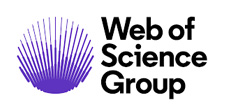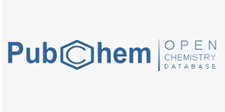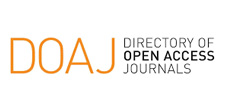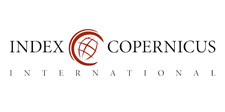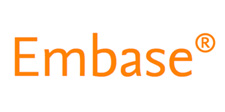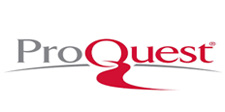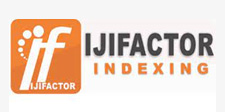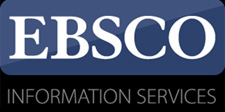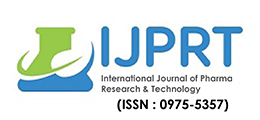Instruction for Author
Submission of Manuscripts
How to Submit Manuscript?
Step I: Register yourself on www.ijprt.com
Step II: Activate your account from your registered mail ID provided by you during registration by clicking on activation link sent by editor@ijprt.com.
Step III: Prepare your manuscript in Word format (doc/dox) file as per the below mentioned guidelines.
Step IV: Submit your word file from your login of www.ijprt.com.
For any queries write us on editor@ijprt.com or call on customer care number +91 97648 51747
Manuscript Preparation
The manuscripts must be type-written in clear, grammatically correct English with no typographical errors. Manuscripts that do not meet the minimal requirements for English grammar and composition will be rejected immediately. Manuscripts with text that is faint or illegible or with substandard illustrations will be returned to the authors.
Neatly type every portion of the manuscript with 1.5 times of spacing and 1 inch margins on all sides, including figure legends, table footnotes and references. The manuscript should be prepared and numbered consecutively as follows: Title page, Abstract, Introduction, Materials and methods, Results and discussion along with table and figure if applicable, Conclusion, Acknowledgements, References.
Use Times New Roman font type and 12 Font size throughout the manuscript. Heading Should be Times New Roman 14 Bold case, Subheading Should be Times Roman 12 Bold Case. Leave one space after a comma, except in chemical names, for example, 1,2,3,4- tetramethyl. For the identification of pharmaceutical substances, the International Nonproprietary Names (INN) proposed and recommended by the WHO should be used. For the units of measurement, the use of the International System of Units (SI) is recommended: m (meter), g (gram), kg (kilogram), μg (microgram), s (second), min (minute), h (hour), d (day), y (year), l (litre), μl (microlitre), ng/ml not ng•ml-1 and r/min not rpm. Excessive abbreviations should be avoided and abbreviations other than those acknowledged, uniform and standard should be contained in brackets at their first use.
Research Papers
New, significant, innovative and original findings are suitable as Research papers.
Please give the title in capital , name of each author and an asterisk placed after the name of the corresponding author, address(es) of the institution(s) at which the work was performed, each author’s affiliation, and a footnote including the complete mailing address, a telephone number, fax number, and e-mail address for the corresponding author.
A structured abstract not exceeding 200 words should be arranged, which clearly indicates Purpose, Methods, Results and Conclusion of study. Avoid abbreviations and references, and do not include diagrams. The abstract with keywords should be typed on a separate sheet.
Below the abstract, type 3-5 keywords or short phrases suitable for indexing
The introduction should not be an extensive literature review although it should provide sufficient background information for the reader to understand and evaluate the results of the present study without referring to previous publications on the same topic.
The section should include sufficient technical information to allow the experiments to be repeated. Procedural detail that has been published previously should be referred to by citation. When a modified procedure is used, only the author's modifications of the previously published method need to be given in detail.
Results should be described as concisely as possible in one of the following ways: text, table(s), or figure(s). Avoid extensive use of graphs to present data that might be more concisely or more comprehensively presented in the figures or tables. The reproducibility and statistical significance of measurements, material or biological data, must be included where relevant. The discussion should provide an interpretation of the results and their significance with regard to previously published work. There should not be any significant repetition of the experimental procedures or reiteration of the introduction.
Should write the name of home university under acknowledgement. The source of any financial support, technical assistance and advice received for the work being published must be indicated in the Acknowledgments section.
(Harvard Style) References to the literature cited for the manuscript should be numbered in order of appearance in the manuscript and cited in the text with superscript numbers. The reference number should follow the following format for e.g
{Name of Author followed by Initial}., Year. {Title of Article}. Name of Journal., Volume (Issue), Page Number.
(For Example :Baas, A.F.L., Medema, R., Morrice, N.A., Alessi, D.R. and Clevers, H.C., 2003. Activation of the tumour suppressor kinase LKB1 by the STE20-like pseudokinase. The EMBO journal., 22(12), pp.3462-3072)
{Name of Author followed by Initial}., Year. Name of Book., Volume (Issue), Name of Publisher.
All tables must be numbered consecutively (using Algebraic numerals) and be cited in the text. Titles should be short but descriptive. Do not use vertical lines and keep horizontal rules to a minimum.
Figures (photographs, drawing, diagrams and charts) are to be numbered in one consecutive series of algebraic numerals in the order in which they are cited in the text and abbreviated as Figure No. 1. Figures should be of equal size and uniform.
Structural and chemical formula, process flow diagrams and complicated mathematical expressions should be very clearly presented. All subscripts, Greek letters and unusual characters must be identified. Structural and chemical formulae as well as process flow diagrams should be prepared in the same way as graphs.
Review articles should be about 15-20 pages long and contains up-to-date information providing comprehensive coverage of relevant literature. Review articles should preferably be written by scientists who have in-depth knowledge of the topic. All format requirements are similar to those applicable to Research papers. Review Articles need not be divided into sections such as Materials and methods, and Results and discussion, but should definitely have an abstract and introduction.
All manuscripts are anonymously reviewed by the editors, members of the editorial board, or qualified ad hoc reviewers. When a manuscript is submitted to the journal, it is given a number and assigned to two reviewers. The reviewers operate under strict guidelines and are expected complete their reviews quickly. Within 4 to 5 weeks after submission, the corresponding author will be notified of the editor’s decision to accept without change, recommended for modification, further review, or reject. When modifications are requested, the corresponding author must either submit the modified version within 2 months or withdraw the manuscript. Manuscripts that have been rejected, or withdrawn after being returned for modification, may be resubmitted if the major criticisms have been addressed. The cover letter must state that the manuscript is a resubmission, and the former manuscript number should be provided in the appropriate field on the submission form.
Applied for Journal Indexing
